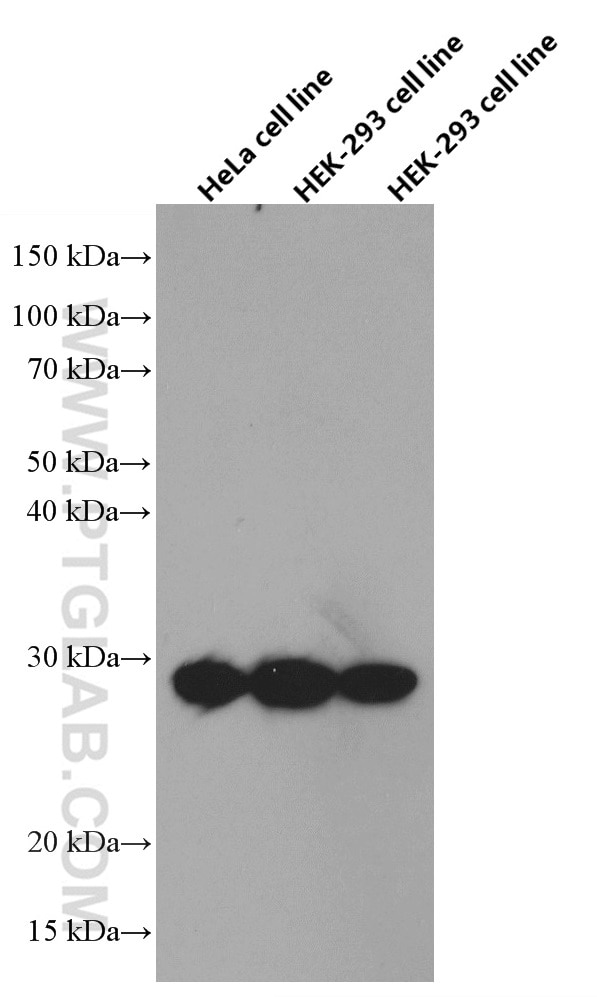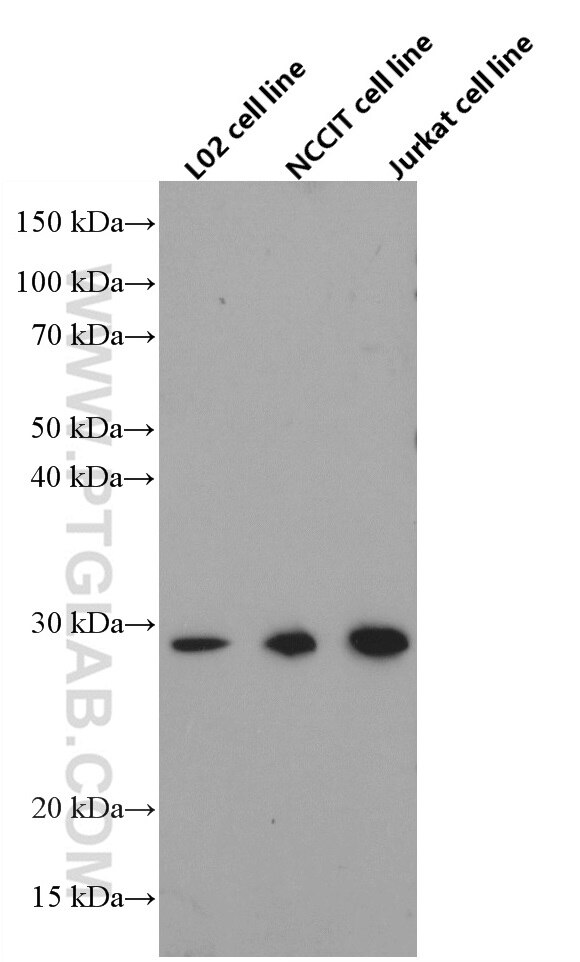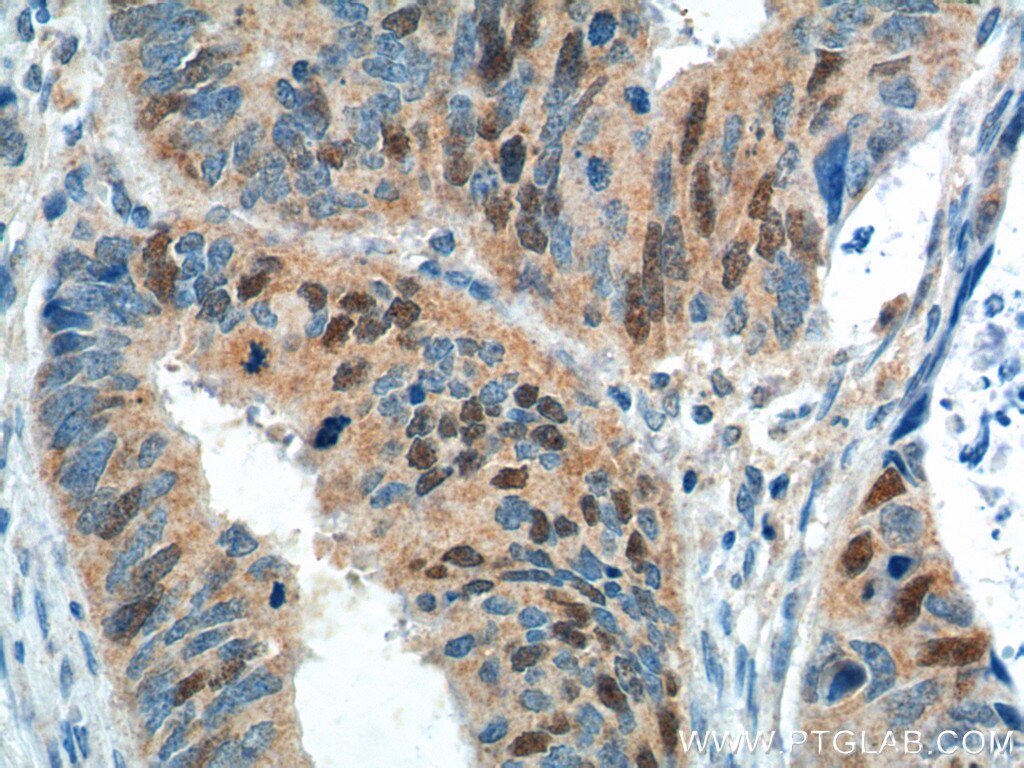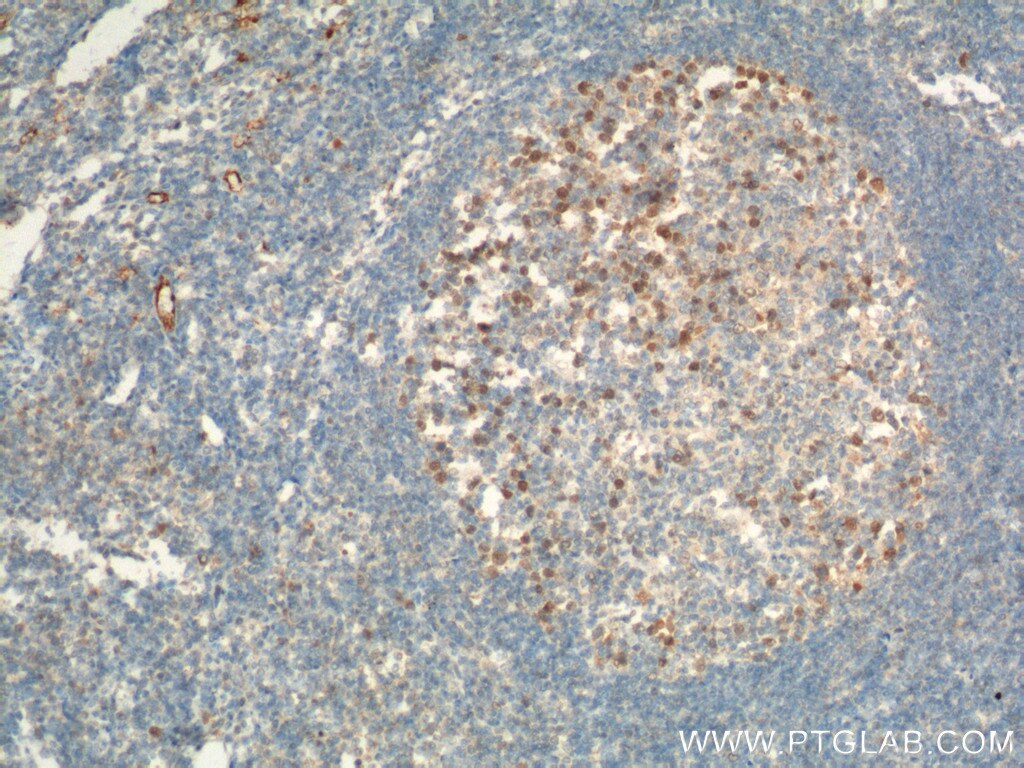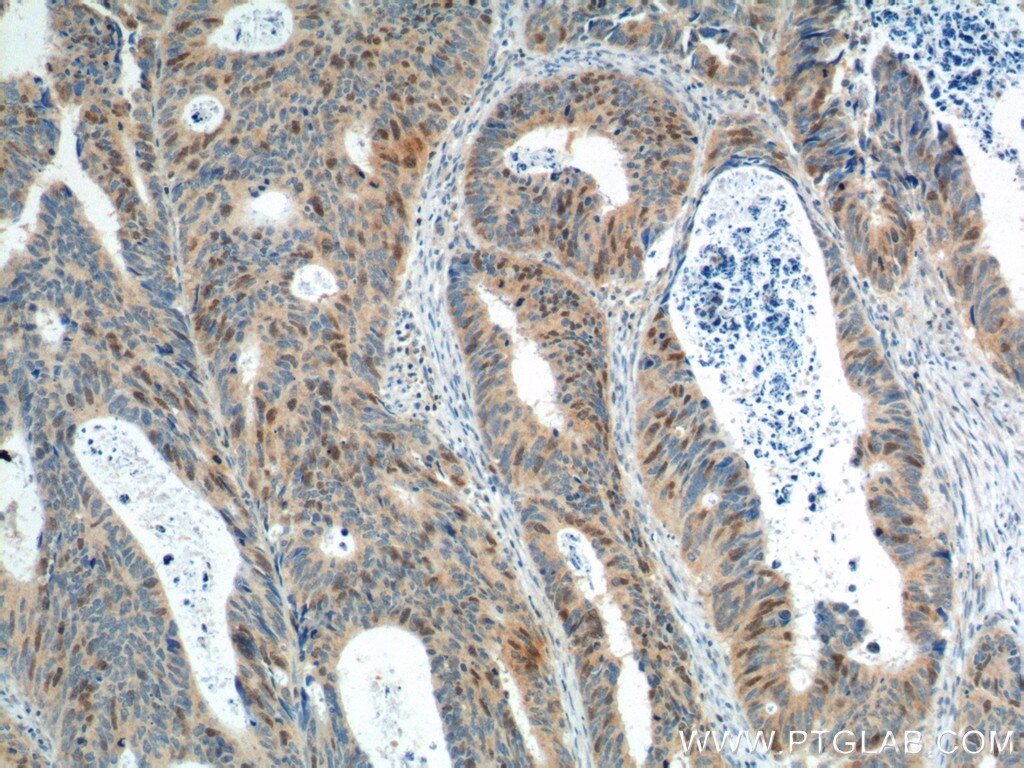Tested Applications
| Positive WB detected in | HeLa cells, L02 cells, HEK-293 cells, NCCIT cells, Jurkat cells |
| Positive IHC detected in | human colon cancer tissue, human tonsillitis tissue Note: suggested antigen retrieval with TE buffer pH 9.0; (*) Alternatively, antigen retrieval may be performed with citrate buffer pH 6.0 |
Recommended dilution
| Application | Dilution |
|---|---|
| Western Blot (WB) | WB : 1:1000-1:6000 |
| Immunohistochemistry (IHC) | IHC : 1:200-1:800 |
| It is recommended that this reagent should be titrated in each testing system to obtain optimal results. | |
| Sample-dependent, Check data in validation data gallery. | |
Published Applications
| WB | See 1 publications below |
Product Information
66566-1-Ig targets Geminin in WB, IHC, ELISA applications and shows reactivity with human samples.
| Tested Reactivity | human |
| Cited Reactivity | rat |
| Host / Isotype | Mouse / IgG1 |
| Class | Monoclonal |
| Type | Antibody |
| Immunogen | Geminin fusion protein Ag24283 Predict reactive species |
| Full Name | geminin, DNA replication inhibitor |
| Calculated Molecular Weight | 24 kDa |
| Observed Molecular Weight | 28 kDa |
| GenBank Accession Number | BC005185 |
| Gene Symbol | GMNN |
| Gene ID (NCBI) | 51053 |
| RRID | AB_2881927 |
| Conjugate | Unconjugated |
| Form | Liquid |
| Purification Method | Protein G purification |
| UNIPROT ID | O75496 |
| Storage Buffer | PBS with 0.02% sodium azide and 50% glycerol , pH 7.3 |
| Storage Conditions | Store at -20°C. Stable for one year after shipment. Aliquoting is unnecessary for -20oC storage. 20ul sizes contain 0.1% BSA. |
Background Information
GMNN, also designated geminin, contains 212 amino acids and has a destruction box sequence (RRTLKVIQP). GMNN participates in ininhibiting DNA replication by preventing the incorporation of MCM complex into pre-replication complex (pre-RC). It is degraded during the metaphase-anaphase transition of cell cycle's mitotic phase, which permits replication in the succeeding cell cycle. GMNN has a broad sedimentation profile ranging from about 25 kDa to 90 kDa, with a major peak at 30 kDa. Scanning of the signals shows that discrete peaks corresponding to apparent mass of 42.5 kDa and 66 kDa are present. (PMID: 15313623)
Protocols
| Product Specific Protocols | |
|---|---|
| WB protocol for Geminin antibody 66566-1-Ig | Download protocol |
| IHC protocol for Geminin antibody 66566-1-Ig | Download protocol |
| Standard Protocols | |
|---|---|
| Click here to view our Standard Protocols |
Publications
| Species | Application | Title |
|---|---|---|
Cell Rep Increased degradation of FMRP contributes to neuronal hyperexcitability in tuberous sclerosis complex |
